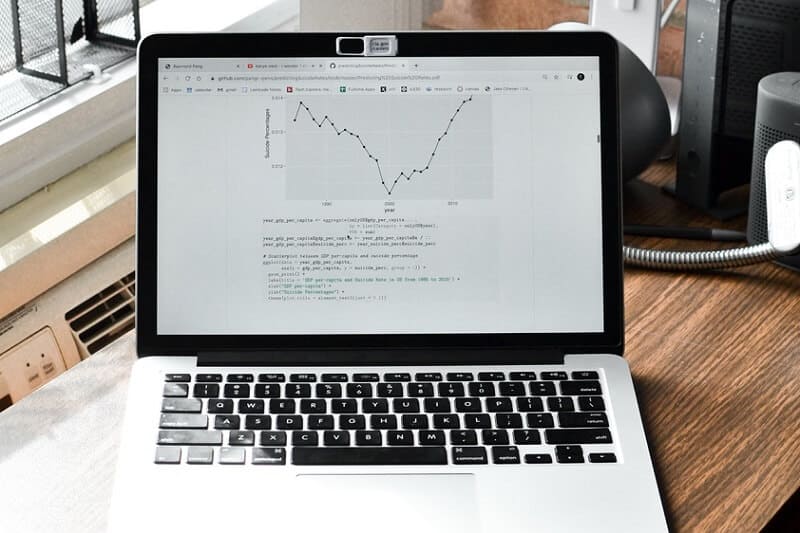
Risk management is the most important thing that you can learn if you want to trade stocks. That will provide you with staying in the game.
By Guy Avtalyon
A risk management strategy for buying stocks means you have a plan. It seems a bit fishy to suggest that you can simply search for “high yield” and “low risk” and find trading opportunities that will beat the odds in the stock market for sure and do it with minimum risk. If it is so simple, why do we have losing trades? How is it possible that no one is doing that? What forces you to choose low yield stock with high risk? Must we really be a genius to be able to find a risk management strategy for buying stocks?
To be honest, smart trading or investing isn’t that simple. In other words, buying stocks requires a risk management strategy among other things.
Risk management for some unknown reasons is low placed on the list of the priorities for the majority of stock traders. Every single trader would rather seek the best indicator than to create a risk management strategy for buying stocks. There is no reason to put this very important issue so low. It is the opposite.
A risk management strategy for buying stocks has to be on the top of a stock trader’s priorities. Without knowledge about risk management, no one can be a profitable trader. As a trader, you must understand how to manage your risk, how to size your position, how to set the orders accurately.
Of course, only if you want to be a profitable trader. In case you don’t stop reading this. For those who want, here is a risk management strategy for buying stocks. Actually, several suggestions.
What is a risk management strategy for buying stocks?
A risk management strategy for buying stocks helps to lower losses. If you have a risk management strategy or you improve it, you’ll avoid most of the problems that can arise and cause you to lose money.
One of the tips is, determine where you will set your stop loss and take profit order but before you enter the position. At the same moment when you find a good entry point, you have to decide where you’d set these important levels: stop loss and take profit points.
When you have recognized the right price levels for your orders, you have to measure the risk/reward ratio. If it doesn’t match your goals, stay away from the trade. Never try to stretch your take profit order or squeeze your stop loss to reach a higher risk/reward ratio. Keep in mind that the reward is always potential, it isn’t 100%-sure. What you can control for sure is a risk.
Yes, we know very well some beginners in stock trading who do this thing totally opposite. They think it is possible to randomly find a risk/reward ratio and then adjust stop loss and take profit orders to reach the desirable ratio. Well, it is possible but what really you’ll get is a losing trade.
Can a trader who has made solid profits waste it all in one bad trade?
Yes, it is particularly true if you don’t have a proper risk management strategy for buying stocks.
Failed traders enter a trade without having any idea of break-even stops or what does it mean at all. Somewhere and somehow they picked that phrase and wanted to implement. Please, avoid it. First of all, if you move the stop loss to the level of your entry wanting to create a trade without losses you are entering one of the most dangerous trades. Moreover, such a trade will often end up as unprofitable. Yes, you have to protect your position but this tactic is going to put you into various problems. It is particularly true if you base your trades on technical analysis. How is that possible? Your entry point is very often evident for other traders too. So many of them will have the same or similar entry point. And what can happen? Well, the elite traders will eat you.
For example, you enter a short trade when support breaks, and the stop loss point is above the support level. But you move your stop loss to a break-even point in order to protect your trade. What happened? The price goes back into support and takes out your stop loss. Support held but you miss profits. Yes, support validated your trading idea but your risk or, in this case, stop loss management fired you out. You moved too soon. That’s a possible danger which amateurs almost never notice. One bad trade and you lost all your money.
Set stop-loss points more effectively
You can do this by using technical analysis, but fundamental analysis can help in timing. For example, you are holding a stock ahead of earnings and drama grows. But you may want to sell before expectations become too high. Use the moving average. For experienced traders, it is maybe the most popular method to set stop loss and take profit points. It’s easy to calculate. Main averages are 5-days, 9-days, 20-days, 50-days, 100-days, and 200-days moving averages. Just apply them to your chart and check how the stock price reacted to them previously, both as support or as a resistance level.
Also, you can set stop-loss or take-profit levels on support or resistance trend lines. Just connect the prior highs or lows that befell above-average volume. The point is to find the levels at which the stock price responded to the trend lines and on volume. For more volatile stocks use a long-term moving average. This will minimize the possibility of an unimportant price move to execute your stop-loss order before it’s time.
Also, you have to adjust moving averages to your target price. For long targets use longer averages. In this way, you’ll reduce the number of generated signals. This will reduce the noise too. If the stock price is changing too much it is the sign of high volatility, set a stop loss adjusted to the market’s volatility. The great help is to know when some major event may occur. For example, earnings reports can be a good time to be in or out of the trade because the volatility can arise.
Pay attention to extremely low P/E stocks as a risk management strategy for buying stocks
Don’t think that playing the stock market is easy. Beating it is more difficult. All you need is to find a stock that is trading at fantastic bargain levels. Well, how to find such opportunities?
One way is to use the P/E ratio. Calculate it by dividing the share price by the number of earnings per share. If the stock is making a high-profit but its share price is low, the stock is undervalued. Beginners may think it is a good opportunity but if they never calculate the P/E ratio they could increase their risk.
A trick of finding low-priced stocks
For example, the stock made $4 per share of profit last year. But this stock is still cheap, its share price is $8 and the P/E ratio is, for example, 4. The average P/E ratio for the industry is, let’s say, 16. And you may think this stock should be trading at least over 4 times higher based on this ratio. But remember, that is just one single ratio.
This stock doesn’t have such a low P/E ratio without the reason. For example, the earnings are unsteady and the company may have problems paying a debt. So, the stock can be cheap if you look at the P/E ratio as a sole metric but traders noticed an increased risk and volatile stock. That affected its share price and the stock is trading at a lower price with the possible high risk involved.
So, you’ll need to analyze other earning ratios or numbers. For example, compare the company’s share price to its cash flow per share. Find the industry average. Only than you’ll if the stock is fairly valued. One note more, if the company boasts a low P/E ratio, be cautious. There is an added risk.
Traders-Paradise wants to show you how to do smart trading. A risk management strategy for buying stocks is one of the most important parts of trading. As far as you learn this, the more successful your trades will be.





